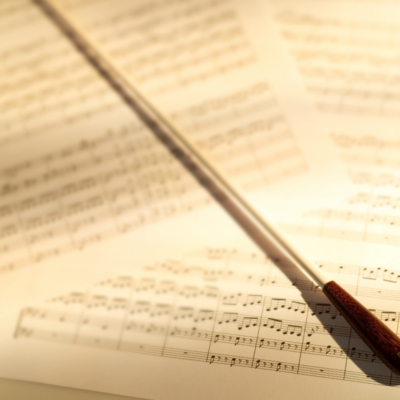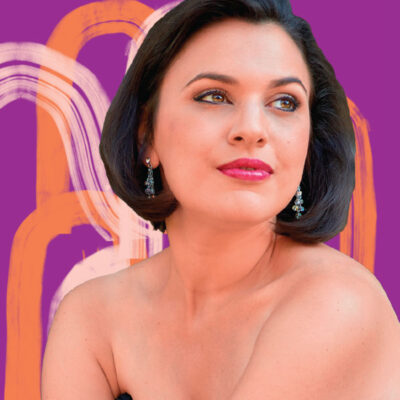From October 13th to the 31st, the California Symphony will be exploring mysteries and superstitions surrounding symphonic composers.

Composers can be a superstitious bunch. For this Friday the 13th during the spooky month of Halloween, we look at three who were fixated on the power of numbers. Judge for yourself if they were undone by the numbers, or if the obsessions themselves may have played a greater role in their demise….
Malicious Muse
Gustav Mahler’s wife, Alma, was known for being an artistic muse to many artists of the 20th century, but she was also ambitious and calculating. Alma claimed that Mahler’s Kindertotenlieder, completed in 1904, was a forewarning of their daughter Maria’s death in 1907, and soon after Maria’s passing, Mahler began fretting about the numerology of his symphonies. Beethoven had died right after writing his Ninth, Bruckner died while writing his Ninth, and Mahler had just completed his Eighth. Mahler therefore believed that he could cheat death if his next symphony was titled rather than numbered.
Sadly, that did not work out as planned: As Alma documented in her letters, “He did not live to see the Ninth performed, or to finish the Tenth.”
As a side note, historians believe that Alma’s motivation for encouraging her husband’s morbid concerns may have been to deflect from the fact that she was cheating on him shortly before his death with Walter Gropius, a famous architect.
An Unlucky Number Indeed
Another numerophobic composer was Arnold Schoenberg. The father of 12-tone music was terrified of the number 13. He avoided rooms, floors, and buildings with the number 13. As Schoenberg aged, the anxiety over the number 13 worsened. He dreaded his sixty-fifth birthday in 1939 because the year was a multiple of 13. He wrote, “Indeed, I am not so well at the moment. I am in my 65th year and you know that 5 times 13 is 65 and 13 is my bad number.”
In 1950 on his seventy-sixth birthday, fellow composer and musician Oskar Adler wrote that because 76 added up to 13 (7+6), it would be a dangerous year for Schoenberg. One day of that year, Schoenberg took to his bed, sick with worry. That day was Friday, July 13, 1951. Schoenberg didn’t make it through the night. He passed away later that day — at 11:45 p.m. — at the age of 76.
To the Memory of an Angel
Alban Berg, who was Arnold Schoenberg’s student also strongly believed in the significance of numbers. In his compositions, he would weave his lover’s and his astrological numbers. He did this in his famous Lyric Suite as well as his Violin Concerto. His Violin Concerto strikes many similarities to Mahler’s works in its focus of life and death and use of folk songs, however there is a more notable connection between Mahler and Berg’s Violin Concerto. The piece was composed in honor of Manon Gropius, who was the daughter of Alma Mahler and Walter Gropius. Manon Gropius died suddenly and tragically at the age of 18 from polio. Even in his grief, Berg astonishingly accomplished the work in less than four months. When asked by his wife to slow down, he replied, “I cannot — I don’t have time.”
Was this urgency caused by the desire to memorialize an unfortunate young girl’s life, or a premonition of his own imminent death? Alban Berg died from sepsis caused by an insect bite at the age of 50 on Christmas Eve — just four months after finishing his Violin Concerto.
Did the numbers really have it in for these three composers — they couldn’t escape their fates? Or was it all just simple chance and coincidence, perhaps exacerbated by the phobias themselves?
We’d put good money on the latter. But then again, maybe we’ll wait until after this Friday the 13th to place that bet…
COMING UP:
A Lemony Snicket Holiday — Saturday, December 23, 2017 at 4PM and 8PM
Pastoral Beethoven — Saturday, January 20, 2018 at 8PM & Sunday, January 21 at 4PM
Mozart Requiem — Saturday, March 17, 2018 at 8PM & Sunday, March 18 at 4PM
Something Old, Something New — Sunday, May 6, 2018 at 4PM
Tickets are available at 925.943.SHOW and LesherCenter.com. Prices start at just $33 per concert.
ABOUT CALIFORNIA SYMPHONY
The California Symphony, now in its fifth season under the leadership of Music Director Donato Cabrera, is a world-class, professional orchestra based in Walnut Creek, in the heart of the San Francisco East Bay since 1990. Our vibrant concert series is renowned for featuring classics alongside American repertoire and works by living composers. The Orchestra is comprised of musicians who have performed with the orchestras of the San Francisco Symphony, San Francisco Opera, San Francisco Ballet, and others, and many of its musicians have been performing with the California Symphony for nearly all its existence.
Outside of the concert hall, the symphony actively supports music education for social change through its El Sistema-inspired Sound Minds program at Downer Elementary School in San Pablo, CA. The initiative brings intensive music instruction and academic enrichment to Contra Costa County schoolchildren for free, in an area where 94% of students qualify for the federal free or reduced price lunch program.
We also host the highly competitive Young American Composer-in-Residence program, which this year welcomes its first female composer, Katherine Balch.
California Symphony has launched the careers of some of today’s most-performed soloists and composers, including violinists Sarah Chang and Anne Akiko Meyers, cellist Alisa Weilerstein, and composers such as Mason Bates, Christopher Theofanidis, and Kevin Puts. The Orchestra performs at the Lesher Center for the Arts in Walnut Creek.
For more information, please visit californiasymphony.org.


